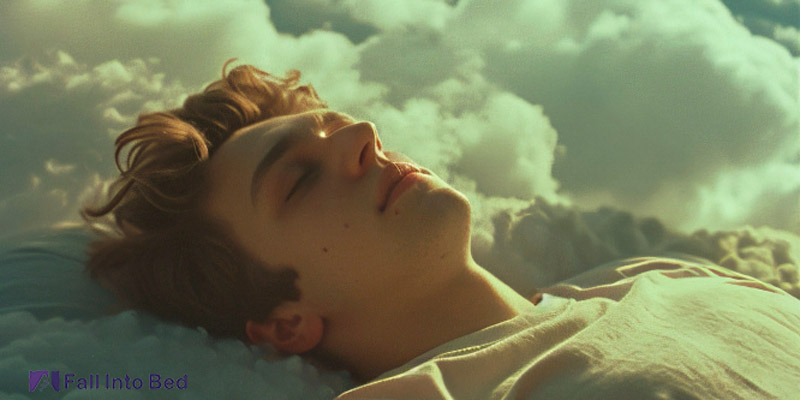Sleep is on of the most important things that can affect our physical and mental health. Understanding what happens in our sleep allows us to promote our sleep quality according to that. In this article we’re going to talk about sleep stages and what happens in each one. We’ll discuss how we can use sleep cycles to wake up easy and fresh.
So without further ado, let’s dive into the world of sleep.
Sleep cycles
Every time you sleep, you go through several sleep cycles that each last for about 90 minutes and then another starts over. In a usual night, you experience around 4 to 6 cycles.
The length of each sleep cycle is not the same. The first sleep cycles are around 70 to 90 minutes, and as the sleep progresses, the cycles get longer, reaching 120 minutes.
But what happens in a sleep cycle?
In each sleep cycle we experience 4 stages. Let’s learn more about the details of each stage:
What happens in each stage?
Stage 1
The first stage or N1 (NREM1) happens in the first 5-10 minutes of your sleep. Your sleep is not deep yet and your body hasn’t gotten relaxed enough yet. But your brain starts to slow down.
During the first stage, it’s very easy to wake someone up, as they’re not deeply asleep yet. Brain waves are theta waves.

Stage 2
During the second stage or N2, your muscles becomes more relaxed, your body temperature drops, and your heartrate and breathing gets slower. This stage lasts for about 10-25 minutes but can lasts even longer as your sleep progresses. Normally you spend half of your sleep in N2.
Brain activity gets slower during this time. This stage is a deeper form of light sleep, but you can still be woken up fairly easily.
Stage 3
During the third stage or N3 of your sleep cycle, you experience deep sleep. Your body relaxes the muscles, pulse and breathing even more. And it’s pretty difficult to wake someone up in this stage. Stage 3 lasts for about 20-40 minutes. However, as you continue sleeping, the time you spend in stage 3 gets shorter and the REM sleep increases.
Deep sleepers who are hard to wake up, likely spend more time in Stage 3 (deep sleep), which is not necessarily a problem, but if it goes on, it can lead to grogginess and cognitive impairment during the day. If you’re a deep sleeper or you know someone who’s difficult to wake, there are some things you can do to try to wake them up easier.
On the other hand, you have probably heard of people who sleepwalk. Sleepwalking actually happens during stage 3, when the sleeper is in a deep sleep. The causes of sleepwalking is not exactly known but there are somethings that can trigger it like stress, alcohol, genetics or some sleep disorders. You have probable heard that we shouldn’t wake someone when they’re sleep walking, but that’s not always the case. You can learn more about how to wake up a sleepwalker and get more information about this condition.

Stage 4
In this stage, things get more interesting. This stage is also called REM, which stands for rapid eye movement. During REM sleep, brain activity is almost as if you’re awake.
Another thing that happens to your body is called atonia, which is when you get a temporary paralysis in your muscles – except the muscles in your eye and the ones that help you breathe– to prevent you from acting out your dreams. That’s why, in this stage your eyes can move quickly under your closed eyelid, which is how this stage got its name.
Some people think that stage 4 is the only stage in which you can have dreams. But that’s not entirely true. Although it’s very uncommon to have dreams in the NREM stages, it’s not impossible to have them. But like we said, experiencing dreams and especially vivid dreams are far more common in REM sleep.
In this stage, your brain waves are a mix between alpha and beta, which is similar to wakefulness. Typically, you don’t reach REM sleep until you’ve been asleep for around 90 minutes. As the night progresses, REM stages get longer, particularly in the second half of your sleep. The first REM phase may only last a few minutes, but later stages can stretch to about an hour. Altogether, REM sleep accounts for roughly 25% of total sleep in adults.
Overview of a sleep cycle
| Stage | type of sleep | length | what happens in this stage |
|---|---|---|---|
| Stage 1 | NREM | 5-10 minutes | – very light sleep – light changes in brain activity – theta waves (low frequency) |
| Stage 2 | NREM | 10-25 minutes | – deeper sleep than stage 1 – relaxed muscles |
| Stage 3 | NREM | 20-40 minutes | – deep sleep – sleepwalking happens in this stage |
| Stage 4 | REM | few minutes up to an hour | – mostly dreaming – vivid dreams – paralysed muscles – brain activity similar to wakefulness |
What is REM and NREM sleep?
The first three stages of the sleep cycle are called NREM sleep, which stands for non-rapid eye movement, and the last stage is REM which as you guessed it, stands for rapid eye movement.
You start with NREM sleep and move through the stages, ending up in REM. Throughout the night, you keep cycling between NREM and REM sleep, with the REM phases getting longer as the night goes on. About 75% of your sleep is NREM, and the remaining 25% is REM. Both are crucial for feeling rested, with NREM focusing on physical recovery and REM handling mental and emotional health.
What affects sleep stages?
Several factors can impact your sleep stages and the overall quality of your sleep. These can either disrupt or improve how much time you spend in each stage, especially in the deeper stages and REM sleep. Here are some common ones:
Factors that negatively affect sleep stages:
- stress and anxiety; high stress levels can negatively affect the sleep cycle and more specifically stage 3 and your deep sleep.
- caffein and alcohol; research have found that excessive use of caffein and alcohol can reduce sleep quality.

- marijuana; studies show that using marijuana before bed can disrupt your sleep cycles and how deep your sleep gets. Also, studies show that lack of sleep can cause nausea throughout the day.
- sleep disorders; Conditions like sleep apnea or restless legs syndrome can disturb sleep by causing frequent awakenings, which kind of reset your sleep cycle all over again.
- age; as you get older, you tend to spend less time in deep sleep (Stage 3) and more time in lighter stages of sleep, making it easier to wake up during the night.
- irregular sleep schedule; Constant changes to your sleep schedule like working night shift or inconsistent bedtime routines can throw off your circadian rhythm, making it harder to get a balanced sleep cycle with enough REM and deep sleep. Check out the effects of sleep deprivation for 7 days straight.
- Using phone before sleep; Using phone or any device that creates blue light, can hurt your sleep and the stages. Make sure you keep your phone far from your bed.
Factors that positively impact sleep stages:
- consistent sleep schedule; just like an inconsistent sleep routine can hurt the cycle, going to bed and waking up at the same time each day helps maintain a healthy circadian rhythm and improve sleep stages.
- regular physical activity; staying physically active can promote deeper sleep

- healthy diet; balanced meals and diet and avoiding heavy or sugary foods before bed helps your body settle into a deeper sleep.
- relaxation techniques; meditation, deep breathing and other relaxation methods can reduce stress which can lead to a better sleep.
How to manage sleep cycles to wake up fresh?
Alright, we’ve talked about all this to know how we can use sleep cycles to wake up easier and have a fresh morning.
Have you ever woken up after 8 hours of sleep and still felt tired?
The reason why you might still be tired after long hours of sleep might be hidden in your sleep stages. So, as we mentioned each sleep cycle is around 90 minutes. And the best time to wake up, is at the end of your sleep cycle. Waking up in the middle of stage 3 for example, would not be very ideal as you were in deep sleep.

In order to wake up easily in the morning, you have to do some calculations the night before, to make sure your awake time would be around the end of your cycle.
What you need to do is to count 90 minute-sleep cycles to the time you want to wake up. For instance, if you want to sleep at 11 p.m., waking up at 8 a.m. would probably be at the end of your sixth cycle.
This is why snooze buttons are not a very good idea. Because in this scenario waking up at 8 is way more refreshing than 8:30. And hitting the 10 minute-snooze button means you’re going to go through a whole new cycle, but not complete it.
Sometimes you don’t have enough time to sleep. In these situations, you might ask yourself the question that is two hours of sleep better than none? Well, there are a lot of things to consider.
You can read more about how long your naps should be, in order to not wake up with a headache.
FAQ about sleep stages
In which stage of sleep do we dream?
We can dream in all 4 stages of sleep, but in stage 4 or REM sleep, dreaming is more common and possible.
How many sleep cycles do we have each night?
Most people go through about 4-6 cycles of NREM and REM sleep each night, with each cycle lasting about 90 minutes.
What is REM sleep, and why is it important?
REM sleep is where most dreaming happens. It’s crucial for memory consolidation, learning, and emotional regulation. Your brain is very active, but your body stays paralyzed to prevent acting out dreams.
Is sleep cycles different for babies?
Yes, babies spend more time on REM sleep. Other than that, a full sleep cycle is 40 minutes in babies, whereas for adults is about 90 minutes.








